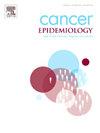在英国卵巢癌的诊断和治疗是否存在不平等?一项基于人群的研究
IF 2.4
3区 医学
Q3 ONCOLOGY
引用次数: 0
摘要
卵巢癌是女性癌症相关死亡的第六大原因。值得注意的是,生存率存在剥夺梯度,来自更富裕的社会经济群体的个体更有可能在诊断后存活五年。本研究考察了在英国不同社会经济群体中接受治疗的差异和诊断和治疗的及时性,这是一个全民医疗保健的国家。方法癌症登记处确定了2016年至2017年英国诊断为卵巢癌的患者的回顾性队列。注册数据与医院事件统计、癌症途径、系统抗癌数据集和诊断成像数据集相关联。采用logistic回归评估手术和化疗的几率。二级保健诊断间隔方法学用于计算诊断和治疗时间测量的起点,并使用分位数回归进行分析。所有分析均使用Stata v17进行。该研究已在ClinicalTrials.gov注册(NCT05185388)。结果共纳入9572例患者。区域剥夺是接受手术和化疗的重要预测因子。经其他因素调整后,最贫困五分之一的患者接受手术和化疗的几率分别为0.68(95 % CI 0.57-0.82)和0.68(95 % CI 0.56-0.81)。调整重要因素后,最贫困地区的患者与最贫困地区的患者相比,从诊断途径开始到治疗的时间间隔明显更长(中位差为4.50天[95 % CI 2.72-6.28])。结论:在英国的这一大型卵巢癌患者队列中,我们证明了来自较贫困地区的患者接受手术或化疗的可能性较小,并且等待开始治疗的时间更长。需要进一步的研究来了解为什么以及什么样的循证行动可以减少这些治疗和及时性方面的不平等。本文章由计算机程序翻译,如有差异,请以英文原文为准。
Are there inequalities in ovarian cancer diagnosis and treatment in England? A population-based study
Introduction
Ovarian cancer ranks as the sixth leading cause of cancer-related mortality among women. Notably, there is a deprivation gradient in survival rates, with individuals from more affluent socioeconomic groups more likely to be alive at five years following diagnosis. This study examines disparities in treatment received and the timeliness of diagnosis and treatment across different socioeconomic groups in England, a country with universal healthcare.
Methods
The Cancer Registry identified a retrospective cohort of patients diagnosed with ovarian cancer in England between 2016 and 2017. Registry data were linked to Hospital Episode Statistics, Cancer Pathway, Systematic Anti-Cancer Dataset, and Diagnostic Imaging Datasets. The odds of surgery and chemotherapy were evaluated using logistic regression. The secondary care diagnostic interval methodology was used to calculate the starting point for the measurement of time to diagnosis and treatment and was analysed using quantile regression. All analyses were conducted using Stata v17. The study was registered on ClinicalTrials.gov (NCT05185388).
Results
A total of 9572 patients were included in the analysis. Area deprivation was a significant predictor of receipt of surgery and chemotherapy. The odds of having surgery and chemotherapy were 0.68 (95 % CI 0.57–0.82) and 0.68 (95 % CI 0.56–0.81), respectively, for patients from the most deprived quintile, adjusting for other factors. The interval measured from the beginning of the diagnostic pathway to treatment was significantly longer for patients from the most, compared with the least deprived areas after adjusting for important factors (median difference 4.50 days [95 % CI 2.72–6.28]).
Conclusion
In this large cohort of patients with ovarian cancer in England, we demonstrated that patients from more deprived areas are less likely to receive surgery or chemotherapy and wait longer to commence treatment. Further research is needed to understand why and what evidence-based actions can reduce these inequalities in treatment and timeliness.
求助全文
通过发布文献求助,成功后即可免费获取论文全文。
去求助
来源期刊

Cancer Epidemiology
医学-肿瘤学
CiteScore
4.50
自引率
3.80%
发文量
200
审稿时长
39 days
期刊介绍:
Cancer Epidemiology is dedicated to increasing understanding about cancer causes, prevention and control. The scope of the journal embraces all aspects of cancer epidemiology including:
• Descriptive epidemiology
• Studies of risk factors for disease initiation, development and prognosis
• Screening and early detection
• Prevention and control
• Methodological issues
The journal publishes original research articles (full length and short reports), systematic reviews and meta-analyses, editorials, commentaries and letters to the editor commenting on previously published research.
 求助内容:
求助内容: 应助结果提醒方式:
应助结果提醒方式:


